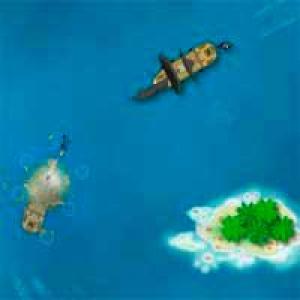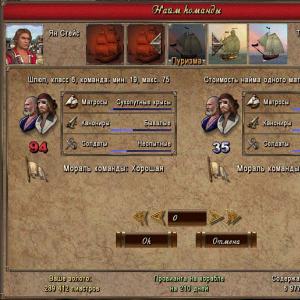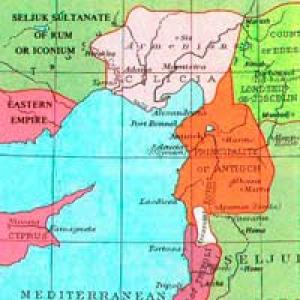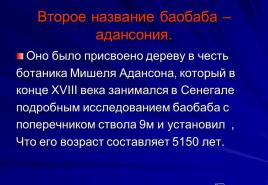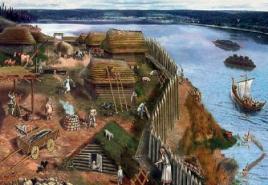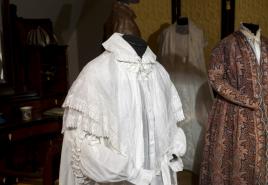Crusaders and crusades. Crusades Sixth Crusade years
Who did not fulfill the vow to go to the liberation of the Holy Land, given by him at his coronation in Aachen (1215) and postponed going there from year to year. However, Frederick accepted the title of King of Jerusalem (although the actual king, John, was his father-in-law) and immediately sent Bishop Amalieri to Palestine to take the oath from the Jerusalem barons.
In 1227, a huge mass of crusaders (about 60 thousand people from England alone) gathered in the south of Italy, in Apulia, to set out on the Sixth Crusade. The crusaders were waiting only for the emperor. The accumulation of such a significant number of people, most of them unaccustomed to the hot climate, led to the terrible development of the plague, from which many died, while others fled home. As a result, Frederick, arriving in Brindisi in August 1227, found the crusader army already significantly weakened. The crusaders were immediately put on ships and sailed, and the emperor set off after them on September 8, but after 6 days he returned to the harbor of Brindisi. In a report immediately sent to the pope, Frederick explained his return by illness and contrary winds. But dad Gregory IX, extremely angry and did not believe in the reality of the emperor’s illness, on November 17, 1227, publicly excommunicated him from the church.
The Emperor, however, paid very little attention to this excommunication. He did not abandon his intention to go to the Holy Land, especially since the then political situation in the East was very favorable to the liberation of the Holy Sepulcher. The sons of Sultan Melik-Adil, who had recently united in view of the danger threatening Egypt, now began to quarrel with each other again. One of them, the Egyptian Sultan Melik-Kamil, even turned to Frederick, asking him for help against his brothers and promising Jerusalem for this. Most of the former crusaders had already dispersed. Frederick II had to look for new ones, and Gregory IX resisted this in every possible way, clearly proving that he put his personal interests above the holy cause of liberating the Holy Sepulcher. As a result, Frederick, with all his energy, could gather a very small number of crusaders, with whom he sailed on the Sixth Crusade on 40 galleys in August 1228 from Brindisi.
On September 7, 1228, Frederick arrived at the harbor of Acre and was solemnly received by the patriarch and the people. But after him, messengers from the pope arrived in Palestine and promulgated the excommunication weighing on the emperor. Then the clergy and the Palestinian population in general began to treat the emperor with hostility. Upon learning of the arrival of Frederick, Sultan Melik-Kamil sent envoys to him with rich gifts and himself went with an army to Palestine, with the aim of capturing Damascus, the owner of which had just died. The emperor immediately entered into negotiations with Camille on the cession of Jerusalem to the Christians. But the negotiations were not as successful as one might expect: Camille, apparently, was afraid of the possibility of too close interference of the German emperor in the affairs of the East.
Frederick II and Sultan Kamil. Miniature from the 14th century
Then Frederick, wanting to hide the protracted negotiations (this could compromise him in the eyes of Christians), approved the intention of the crusaders to strengthen the cities that were in their hands, as well as to capture the city of Jaffa (Joppia), very important as the port closest to Jerusalem. The capture of Jaffa was all the more part of the emperor's plans, since the possession of this city brought him closer to the Egyptian sultan, with whom he negotiated. But, but because of the excommunication that weighed heavily on Frederick, the Jerusalem knights ( Templars And johannites) agreed to go with the emperor only on condition that all orders would come not from the name of Frederick, but in the name of God and the holy church. Since the emperor did not agree to this, he had to move to Jaffa with only 10 thousand infantry (a force that was unsatisfactory both in number and composition: the lack of cavalry with an enemy rich in it). To the credit of the knights, the consciousness of duty and the importance of the matter overpowered their desire to serve the interests of the pope: they followed Frederick at some distance, so that if necessary they could always support him. Soon the emperor, not wanting to risk a division of forces, gave in to the demands of the knights.
On November 15, 1228, the crusaders occupied Jaffa and began to fortify this city. When setting out for Jaffa, the participants of the Sixth Crusade took with them food only for the duration of the march to it. They hoped to transport the rest of the supplies later by sea to the captured city. This was extremely careless: they might not have taken Jaffa, then there would not have been enough food for the return trip; In addition, the sea, depending on the weather, is an extremely incorrect line of communication. Indeed, a strong storm delayed the fleet carrying food at sea, as a result of which the crusaders of the Sixth Campaign began to endure extreme poverty, attributing their hardships to the decision to follow the excommunicated emperor. Many even thought of leaving the ranks of the army, but fortunately the wind soon died down, and the expected transport to Jaffa arrived.
Meanwhile, negotiations with the Sultan continued. Both sides wanted peace: the emperor - because of the hostility of Palestinian Christians towards him (there was even a conspiracy against his life) and rumors of an attack by the pope's troops on his European possessions; Kamil - in view of the threatening situation assumed by the army of the new Damascus Sultan. Therefore, on February 18, 1229, a truce was concluded for 10 years, according to which Christians received Jerusalem and other holy places. This agreement, despite the fact that it achieved the goal of the Sixth Crusade without bloodshed, outraged everyone, and especially the Patriarch of Jerusalem, without whose knowledge it took place. The Patriarch banned worship in Jerusalem during the emperor's stay in it, and this further increased the discord between Christians.

Kingdom of Jerusalem (in yellow) after the Treaty of 1229
Meanwhile, the unity of the latter was very necessary. The Damascus Sultan David did not recognize the concessions of Jerusalem, and it was important to take advantage of the discord between the Saracens in order to finally strengthen the Holy Land. Despite the non-recognition of the treaty, the emperor entered Jerusalem on March 17, 1229, where, in view of the patriarch’s refusal, he assumed the Jerusalem crown. The increased hostility of Palestinian Christians towards Frederick forced him to return to Jaffa two days later, but here too he was met with discontent. The embittered emperor began to cruelly persecute the hostile clergy. Soon, news from Europe about the pope's attack on the possessions of Frederick forced him on May 1, 1229 to go home. When leaving, he did not take measures to strengthen the holy places for Christians. This ended the Sixth Crusade. The departure of Frederick, who had great influence on the Saracens, thanks to his good relations with Sultan Kamil, noticeably weakened the position of the Christian colony in the Holy Land, which was also worsened by constant strife between the knightly orders and the imperial governor.
The Sixth Crusade, remarkable for the lack of combat clashes between the warring parties, is completely invisible militarily. This campaign is much more interesting from the side of politics: it showed its significance in the war and the importance of personal relations between the main leaders (bad relations between the emperor and the pope harmed the cause; good relations between the emperor and the sultan, on the contrary, helped). More importantly, the Sixth Crusade characterized in relief the relationship between the papal and imperial authorities. The first was clearly in decline: even excommunication did not deprive the emperor of the opportunity to go to the East. Another obvious conclusion from the events of this campaign was the cooling of Europe towards the idea of the Crusades.
These are the military-colonization movements of Western European feudal lords, part of the townspeople and the peasantry, carried out in the form of religious wars under the slogan of the liberation of Christian shrines in Palestine from the rule of Muslims or the conversion of pagans or heretics to Catholicism.
The classical era of the Crusades is considered to be the end of the 11th - beginning of the 12th centuries. The term "Crusades" appeared no earlier than 1250. The participants in the first Crusades called themselves pilgrims, and campaigns - a pilgrimage, deeds, expedition or sacred road.
Causes of the Crusades
The need for the Crusades was formulated by the Pope Urban after graduation Clermont Cathedral in March 1095. He determined economic reason for the crusades: the European land is not able to feed the people, therefore, in order to preserve the Christian population, it is necessary to conquer rich lands in the East. Religious argumentation concerned the inadmissibility of storing shrines, primarily the Holy Sepulcher, in the hands of infidels. It was decided that the army of Christ would set out on a campaign on August 15, 1096.
Inspired by the appeals of the pope, crowds of thousands of ordinary people did not wait for the deadline and rushed to the campaign. The pitiful remnants of the entire militia reached Constantinople. The bulk of the pilgrims died on the way from deprivation and epidemics. The Turks dealt with the remainder without much effort. At the appointed time, the main army went on a campaign, and by the spring of 1097 it was in Asia Minor. The military advantage of the crusaders, who were opposed by the disunited Seljuk troops, was obvious. The crusaders captured cities and organized crusader states. The native population fell into serfdom.
History and consequences of the Crusades
The consequence of the first campaign there was a significant strengthening of positions. However, its results were fragile. In the middle of the 12th century. intensifies the resistance of the Muslim world. One after another, the states and principalities of the crusaders fell. In 1187 Jerusalem was conquered with all the Holy Land. The tomb of the Lord remained in the hands of the infidels. New Crusades were organized, but they all ended in total defeat..
During IV Crusade Constantinople was captured and barbarously plundered. In place of Byzantium, the Latin Empire was founded in 1204, but it was short-lived. In 1261 it ceased to exist and Constantinople again became the capital of Byzantium.
The most monstrous page of the Crusades was children's hike, held around 1212-1213. At this time, the idea began to spread that the Holy Sepulcher could only be released by innocent children's hands. Crowds of boys and girls aged 12 and older flocked to the coast from all European countries. Many children died along the way. The rest reached Genoa and Marseilles. They didn't have a plan to move forward. They assumed that they would be able to walk on water “like on dry land,” and the adults who were promoting this campaign did not take care of the crossing. Those who came to Genoa dispersed or perished. The fate of the Marseille detachment was more tragic. Merchant adventurers Ferrey and Pork agreed “for the sake of saving their souls” to transport the crusaders to Africa and sailed with them on seven ships. The storm sank two ships along with all the passengers; the rest were landed in Alexandria, where they were sold into slavery.
In total, eight Crusades were launched to the East. By the XII-XIII centuries. include the campaigns of German feudal lords against the pagan Slavic and other peoples of the Baltic states. The indigenous population was subjected to Christianization, often violently. In the territories conquered by the crusaders, sometimes on the site of previous settlements, new cities and fortifications arose: Riga, Lubeck, Revel, Vyborg, etc. In the XII-XV centuries. Crusades against heresies are organized in Catholic states.
Results of the Crusades ambiguous. The Catholic Church significantly expanded its zone of influence, consolidated land ownership, and created new structures in the form of spiritual knightly orders. At the same time, the confrontation between the West and the East intensified, and jihad intensified as an aggressive response to the Western world from the Eastern states. The IV Crusade further divided the Christian churches and implanted in the consciousness of the Orthodox population the image of an enslaver and enemy—the Latin. In the West, a psychological stereotype of distrust and hostility has become established not only towards the world of Islam, but also towards Eastern Christianity.
Jerusalem was returned to the Christians, but remained without fortifications. He constantly had to fear attacks from Muslims. The inhabitants of the Holy Land lived in constant anxiety; no one else dared to visit the Holy Places. More than 10,000 pilgrims were killed in the Judean mountains.
At the council convened by the pope in Spalato, the groans of Zion were again heard. This council, which was attended by Frederick II with the patriarchs of Constantinople and Jerusalem, decided to continue the war with the infidels and go to the aid of the Christian colonies in the East.
While waiting for the armies to gather, the pope sent several missionaries overseas to fight the teachers and followers of Islam with the sword of the word. At the same time, Gregory addressed messages to the Caliph of Baghdad, to the Sultans of Cairo and Damascus and to many Muslim princes, convincing them to accept the Christian faith or, at least, to patronize Christians.
This way of fighting Islam was something new in holy wars. The idea of him appeared during the struggle with the Albigensians and northern pagans, where missionaries almost always preceded the soldiers of the Cross.
The monks of the Dominican and Franciscan orders were instructed to preach holy war to the entire Christian world; they were authorized not only to distribute crosses to pilgrims, but also to exempt from pilgrimage those who were obliged to provide maintenance to the crusaders.
Everywhere the clergy met the monks in procession, with banners and the best church decorations. Those present at their sermons were given indulgences, the validity of which extended for several days; in the name of the Holy See, they demanded that each believer make a weekly tax for the expenses of the Crusade. They had at their disposal spiritual treasures for all who served the sacred enterprise, and curses for those who betrayed the cause of the Lord God or remained indifferent to it.
However, all the means, the admonitions of the pope, the name of Jerusalem, which had worked so powerfully in former times, could no longer arouse the enthusiasm of the people, and the cause of this Crusade would not have moved beyond vain preaching, if several noble vassals of the kingdom of France, who rebelled against the royal power and were defeated it, the idea did not come to atone for the crimes of the internecine war through a holy war.
Thibault, Count of Champagne, and the King of Navarre, Duke of Brittany, Peter Mauclerc accepted the cross. Following their example, the counts of Barsky, Forezsky, Maconsky, de Joigny, Nevers, Amalric, son of Simon of Montfort, Andrei Vitreysky, Gottfried Ansenisky, many barons and noble rulers took an oath to go to war in Asia.
Then a council was convened in Type - not to arouse the zeal of the believers, but to discuss various issues relating to this Crusade. In previous expeditions, both thieves and robbers joined the ranks of the soldiers of Jesus Christ, and such a miracle served as an edification to all believers. Now opinions changed, and the council, so as not to tempt the Knights of the Cross, was forced to decree that great criminals should not be accepted into the army of pilgrims. Due to the bad treatment of the Jews, the Council of Tours protected their lives and property with the special protection of the church.
When the new crusaders were preparing to depart for Palestine, the Franks of Constantinople, driven to their last extremity, came to the West to ask for immediate help. This Latin empire, founded in such a glorious manner, was now limited to the boundaries of one capital, constantly threatened by the Bulgarians and the Nicaean Greeks.
John of Brienne, to whom fate apparently destined to support all crumbling greatness, was called to save the Latin Empire, as before he was called to save Jerusalem, but he could not strengthen the shaken throne with his victories.
Having reigned for four years over the remnants of Constantine's empire, he died at the age of 89, in the humble habit of a monk of the Franciscan Order. From the imperial family of Kurtneev there was now only one prince left, who traveled around Europe, appealing to the mercy of sovereigns and peoples.
The Pope, seeking to correct the situation of Baldwin II, invited the crusaders, ready to leave for the Holy Land, to help their brothers in Constantinople. “Greece,” Gregory told them, “was the way to Jerusalem.”
The crusaders wavered between Constantinople and Jerusalem and, held back by either the pope or Frederick, forced the Eastern Christians to wait for a long time for the help they were promised. To top the misfortune, a new quarrel broke out between Gregory IX and the German emperor.
The bickering between the papacy and the empire reached extremes. For the imperial party, the church no longer had anything sacred. The Pope preached a Crusade against his formidable rival and offered the imperial crown to the one who would be able to overthrow him from the throne. Frederick then opposed the pope with arms in hand and appeared at the head of an army in the very capital of the Christian world.
Military operations in the Holy Land
Amid the general confusion and despondency, the cries and pleas of the Christian colonies in the East were no longer heard. At the end of the truce concluded with Frederick, the Muslims returned to Jerusalem, which was left without protection.
Ptolemais and the Christian cities no longer had communication with Europe, from which they expected salvation. There was a war between all the fleets in the Mediterranean Sea - some fought for the pope, others for the emperor. Thibault and his companions could hardly find ships to move to Syria and some left from Marseille, others from various Italian ports.
Arriving in Palestine, they found this country torn by disagreements: one party acted in favor of the German emperor, the other stood for the king of Cyprus, and there was no authority that could control the forces of the Crusade. The crowd of pilgrims was not bound by any common interest that could keep them under the same banners for a long time, each of the leaders chose his enemies and waged war at his own expense and in his own name.
The Duke of Brittany with his knights attacked the Damascus possessions and returned with many buffaloes, rams and camels. At the sight of such rich booty, envy awoke in the other crusaders, and they set off to plunder the fertile Gaza lands. The most ardent (or greedy?) of the crusaders rushed far ahead and clashed with the Muslim army and, in the ensuing battle, almost completely died.
After this defeat, none of the crusading princes dared to enter into new battles; only complaints and murmurs were heard in the Christian army about the disasters of the Crusade.
The papal legate and the clergy denounced in their sermons the envious and arrogant spirit of the leaders and did not cease to pray to the Lord Jesus Christ to awaken in them zeal for the Cross and enthusiasm for the holy war.
Idleness gave rise to vices and strife, which made one despair of the outcome of this expedition. Fortunately for the Christian colonies, there were also discords among the Muslims, and they did not attack the possessions of the Franks. The princes and barons, having spent several months in their tents, now thought only of returning to their fatherland; they entered into separate negotiations with the Saracens and made peace in the same manner in which they had carried on the war.
Some of them entered into an agreement with the Sultan of Damascus, others with the Sultan of Egypt. Through these negotiations they regained possession of the Holy Places. But the liberation of Jerusalem, which had been conquered so many times and could never be preserved, was not accepted by the believers with the same enthusiasm.
The Count of Champagne and the Dukes of Breton and Burgundy were replaced by Richard of Cornwall, brother of Henry III and nephew of Richard the Lionheart. The latter turned out to be no luckier than those who preceded him - all that he managed to acquire through his expedition was only the opportunity to bury the bodies of the crusaders who fell in the battle of Gaza.
The end of the last "great" crusade
These are the final events of the Sixth Crusade, the last great campaign of the West against the East. Of course, the Crusades continued after that, there was a seventh and even an eighth, which will be discussed later, but... they can be called “crusades” with a big stretch, and in scale - even more so. The era of the great campaigns was coming to an end, and along with them, the whole world, the world of old Europe, was coming to an end.
Source - Compilation based on the book by Joseph Michaud, “History of the Crusades”, and other materials in the public domain
Posted by - Melfice K.
The history of mankind is, unfortunately, not always a world of discoveries and achievements, but often a chain of countless wars. These include those committed from the 11th to the 13th centuries. This article will help you understand the reasons and reasons, as well as trace the chronology. It is accompanied by a table compiled on the topic “Crusades”, containing the most important dates, names and events.
Definition of the concepts of “crusade” and “crusader”
The Crusade was an armed offensive by a Christian army against the Muslim East, which lasted a total of more than 200 years (1096-1270) and was expressed in no less than eight organized marches of troops from Western European countries. In a later period, this was the name for any military campaign with the goal of converting to Christianity and expanding the influence of the medieval Catholic Church.
A crusader is a participant in such a campaign. On his right shoulder he had a patch in the form of The same image was applied to the helmet and flags.
Reasons, reasons, goals of hikes
Military demonstrations were organized. The formal reason was the fight against Muslims in order to liberate the Holy Sepulcher, located in the Holy Land (Palestine). In the modern sense, this territory includes states such as Syria, Lebanon, Israel, the Gaza Strip, Jordan and a number of others.

No one doubted its success. At that time it was believed that anyone who became a crusader would receive forgiveness of all sins. Therefore, joining these ranks was popular both among knights and among city residents and peasants. The latter, in exchange for participation in the crusade, received liberation from serfdom. In addition, for European kings, the crusade was an opportunity to get rid of powerful feudal lords, whose power grew as their holdings increased. Wealthy merchants and townspeople saw economic opportunity in military conquest. And the highest clergy themselves, led by the popes, considered the crusades as a way to strengthen the power of the church.
The beginning and end of the Crusader era
The 1st Crusade began on August 15, 1096, when an unorganized crowd of 50,000 peasants and urban poor went on a campaign without supplies or preparation. They were mainly engaged in looting (since they considered themselves warriors of God, to whom everything in this world belonged) and attacked Jews (who were considered the descendants of the murderers of Christ). But within a year, this army was destroyed by the Hungarians they met along the way, and then by the Turks. Following the crowd of poor people, well-trained knights went on a crusade. By 1099 they had reached Jerusalem, capturing the city and killing a large number of inhabitants. These events and the formation of a territory called the Kingdom of Jerusalem ended the active period of the first campaign. Further conquests (until 1101) were aimed at strengthening the conquered borders.

The last crusade (eighth) began on June 18, 1270 with the landing of the army of the French ruler Louis IX in Tunisia. However, this performance ended unsuccessfully: even before the battles began, the king died of a pestilence, which forced the crusaders to return home. During this period, the influence of Christianity in Palestine was minimal, and Muslims, on the contrary, strengthened their position. As a result, they captured the city of Acre, which marked the end of the era of the Crusades.
1st-4th crusades (table)
Years of the Crusades | Leaders and/or Major Events | ||
Duke Gottfried of Bouillon, Duke Robert of Normandy and others. The capture of the cities of Nicaea, Edessa, Jerusalem, etc. | Proclamation of the Kingdom of Jerusalem |
||
2nd Crusade | Louis VII, King Conrad III of Germany | Defeat of the Crusaders, surrender of Jerusalem to the army of the Egyptian ruler Salah ad-Din |
|
3rd Crusade | King of Germany and the Empire Frederick I Barbarossa, French King Philip II and English King Richard I the Lionheart | Conclusion of a treaty by Richard I with Salah ad-Din (unfavorable for Christians) |
|
4th Crusade | Division of Byzantine lands |
5th-8th Crusades (table)
Years of the Crusades | Leaders and main events | ||
5th Crusade | Duke Leopold VI of Austria, King Andras II of Hungary and others. Expedition to Palestine and Egypt. | Failure of the offensive in Egypt and negotiations on Jerusalem due to lack of unity in leadership |
|
6th Crusade | German king and emperor Frederick II Staufen | Capture of Jerusalem through a treaty with the Egyptian Sultan In 1244 the city fell back into Muslim hands. |
|
7th Crusade | French King Louis IX Saint March on Egypt | Defeat of the Crusaders, capture of the king followed by ransom and return home |
|
8th Crusade | Louis IX Saint | Curtailment of the campaign due to an epidemic and the death of the king |
Results
The table clearly demonstrates how successful the numerous crusades were. There is no clear opinion among historians about how these events affected the lives of Western European peoples.

Some experts believe that the Crusades opened the way to the East, establishing new economic and cultural ties. Others point out that it could have been done more successfully peacefully. Moreover, the last crusade ended in an outright defeat.
One way or another, significant changes took place in Western Europe itself: the strengthening of the influence of the popes, as well as the power of kings; the impoverishment of the nobility and the rise of urban communities; the emergence of a class of free farmers from former serfs who gained freedom thanks to participation in the crusades.
The Sixth Crusade was the last successful action of the crusaders in the East. During diplomatic negotiations, Jerusalem was retaken (1229). But 15 years later, the city was recaptured by the Muslims, this time for good.
Preparations for the Sixth Crusade
Pope Honorius III declared the main culprit for the failure of the Fifth Crusade to be the German Emperor Frederick II, who never took part in it.

Rice. 1. Emperor Frederick II.
In March 1227 Honorius III died. Gregory IX became the new pope, who strictly demanded that Frederick II fulfill his holy vow.
The German emperor obeyed and in August 1227 he and his army went to sea. On the way, Frederick II fell dangerously ill and made a stop for treatment. Gregory IX considered this a deception and excommunicated the emperor, which prohibited him from taking part in the crusade.
Progress of the Sixth Crusade
Frederick II ignored his excommunication. In the summer of 1228 he set out on the Sixth Crusade. In response, Gregory IX excommunicated Frederick II from the church for the second time.
TOP 4 articleswho are reading along with this
The angry Pope called Frederick II a pirate and “servant of Mohammed.”
After a short stop in Cyprus, the crusaders arrived in Acre. The local nobility did not support the excommunicated emperor and did not provide military assistance. From this time on, the main events of the Sixth Crusade unfolded in the field of diplomacy.

Rice. 2. A ship off the coast of the Holy Land. Fresco, XII century..
There was also no unity among Muslims.
The Ayyubid state was divided between three brothers:
- al-Kamil of Egypt;
- an-Nasir Daoud of Syria;
- al-Ashraf of Jazira.
Sultan al-Kamil sent envoys to Frederick II back in 1226 asking for help and offering favorable terms. Arriving in Palestine, the German emperor continued negotiations and at the same time created a springboard for an attack on Jerusalem. Khorzmshah Jalal ad-Din was preparing an attack on al-Kamil's possessions, so the Sultan hastened to conclude a peace agreement.
The final date of the Sixth Crusade was February 18, 1229. A peace treaty was signed between the Egyptian Sultan and the German Emperor for 10 years.
Main provisions of the agreement:
- Christians receive Jerusalem, Bethlehem, Nazareth, the narrow corridor between Jaffa and Jerusalem, as well as Sidon;
- In Jerusalem, the Temple Mount with two mosques remains under Muslim control;
- Christians could rebuild the destroyed walls of Jerusalem;
- all prisoners were released without ransom;
- Frederick II guaranteed the Sultan's support against all enemies;
- profitable trade agreements were concluded.

Rice. 3. Emperor Frederick II wearing the crown of the King of Jerusalem.
Significance and result of the Sixth Crusade
The peaceful capture of Jerusalem was a unique event in medieval diplomacy. Frederick II proved that it was possible to come to an agreement with Muslims. The authority of the German emperor in the Christian world increased significantly.
In 1230, the Pope lifted the excommunication from Frederick II and approved a peace treaty with the Sultan.
After Frederick II left for Europe, a civil war began in the Kingdom of Jerusalem between local feudal lords. The kingdom consisted of scattered cities and castles with no common border. Therefore, the Muslims soon recaptured the Holy City.

